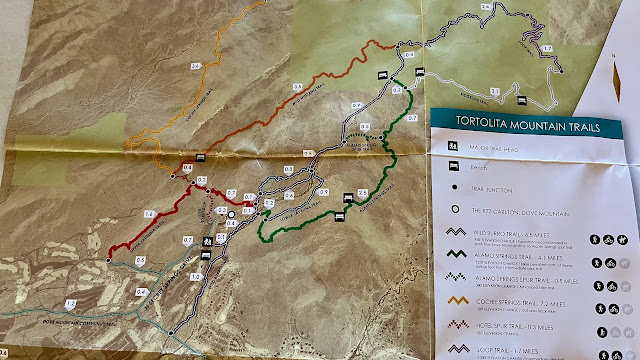Beautiful day. Highs got up to in the 50s, up from 32º starting out. Kept a pretty decent pace throughout. Started out mostly climbing, but after four or five miles, the hike leveled out on ridge trails. [Click the pic to continue on the blog]
 |
| This clumsy hike name is AllTrail's concoction. Those of us who know this hike call it simply the Tortolita Superloop. Tortolita means little turtle dove in Spanish. |
 |
| The Superloop is composed of all the perimeter trails on this map: Wild Burro, Alamo Springs, Ridgeline, Loop, Wild Mustang, and the Upper Javalina trails. |
 |
One starts out with a 1,000 foot rocky climb up, just to get the heart going, and the ankles potentially twisted. |
 |
The afore-mentioned aggressive animals I encountered: a 15k trail racing primate on the left (one of 20 or so), and a bicycling biped on the right (maybe a dozen all told). |
 |
| This wind-driven mill was retrofitted with a solar panel and the blades removed. It's used to pump water into a tank for a horse trough. |
 |
| The Wild Mustang Trail portion was devoid of bikers, and almost devoid of hikers save one I ran into. |












Happy Trails to YOU!
ReplyDelete